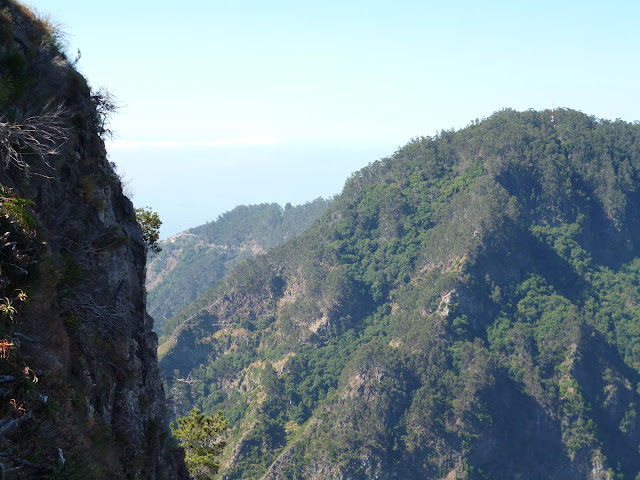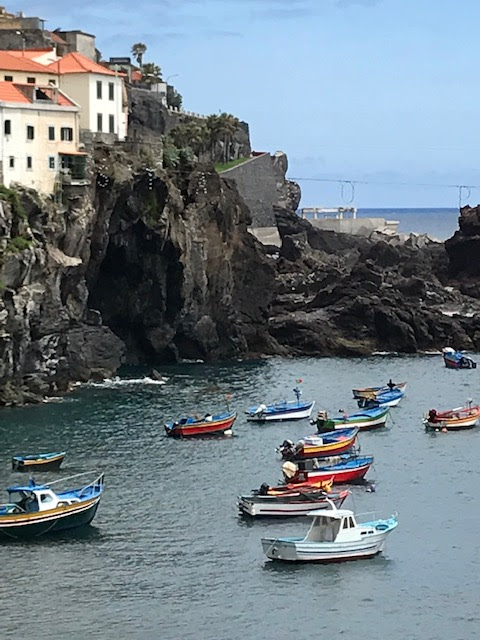I'm very excited to be able to share with you a guest post today - please welcome Julia Ibbotson, the author of Dr Dulac series, who is talking about the island setting for her book, The Dragon Tree.
The Dragon Tree (Dr DuLac series Book 2)
A haunting medieval time-slip
Echoes of the past resonate through time and disturb medievalist Dr DuLac as she struggles with misfortune in the present. She and Rev Rory have escaped to the island of Madeira on a secondment from their posts, yet they are not to find peace – until they can solve the mystery of the shard of azulejo and the ancient ammonite. Viv’s search brings her into contact with two troubled women: a noblewoman shipwrecked on the island in the 14th century and a rebellious nun at the island convent in the 16th century. As Viv reaches out across the centuries, their lives become intertwined, and she must uncover the secrets of the ominous Dragon Tree in order to locate lost artefacts that can shape the future.
For fans of Barbara Erskine, Pamela Hartshorne, Susanna Kearsley, Christina Courtenay.
(for A Shape on the Air) “In the best Barbara Erskine tradition …I would highly recommend this novel” -Historical Novel Society
(for the series) “Julia does an incredible job of setting up the idea of time-shift so that it’s believable and makes sense” – book tour reviewer
“The idea of being able to ‘feel’ what happened in the past is enticing … The sense of the island is really wonderful … Julia brings it to life evocatively” – Joanna Barnden
“an engaging and original time-slip novel that keeps the reader turning the pages…the characters are authentic and the mystery is neatly woven between the centuries … seamless time transitions” – Melissa Morgan
Purchase Link - http://myBook.to/TDT
Madeira:
an island setting for The Dragon Tree
What do you think of
when you imagine a love story set on a tropical island? Sunshine, heat,
turquoise sea, golden beaches? Holding hands along the seafront? Shaped hotel
swimming pools, beach bars, cool cocktails?
But The Dragon
Tree is a novel of love stories and mystery that intertwine through history,
and if you take a look at the image on the front cover you’ll see, beneath the
pictures of the women whose lives interweave, a different reflection. Not a hot
sexy beach, but a hint of storms and
dark skies. Love stories all have their ups and downs, that’s what makes them
gripping page turners, and The Dragon Tree is no exception! But does
love survive and flourish in the end? We always hope so.
Madeira, its setting,
is certainly a tropical island: sun, sea, and … well not golden sand! There
aren’t sandy beaches around Madeira’s glorious coastline (only a couple of
imported ones), but there is certainly dramatic scenery, because of its
volcanic origins. The vertiginous cliffs drop straight down into the sea, with
rocks and volcanic ‘sand’. Its beautiful scenery changes dramatically from the
pretty seafront to the vast craggy mountains of the volcanic centre that tower
above.
The volcano that
became ‘Madeira’ rose from the seabed through the waves some 5 million years
ago. Its recorded history has woven through peace and crisis right through from
its discovery in 1419, through its own darkness to the island of beauty and
relaxation we see today. It has a fascinating history.
So, it became an
obvious location for me to set The Dragon Tree, a story of turbulence
and secrets and mysteries, against the backdrop of heat and sunshine, love and
pain. It was the right place for me to tell my tale of two women reaching out
across the centuries to Dr Viv and her ‘hot priest’, Rev Rory.
When they fly in to
the island, Viv is looking out of the window of the aircraft – or trying not
to! – as it swoops like a bird over the sea, close above the waves, its wings
seeming to touch the water. Or the cliffs. Her first wary impression of it is “the sharp golden light on the sparkling deep blue sea and she could
almost feel the heat haze rising from the rugged cliffs that appeared to climb
steeply up from the edge of the water. She could make out the white painted
houses with red tiled roofs clustered closely up every gorge, clinging to the
very edge of the radiating ravines that slashed through the towering mountains
up into the clouds and the heart of the volcano.”
Viv
has issues. She knows that her late parents spent one of their final
archaeological ‘digs’ on the shore of the island and she has a treasured
artefact from them in her memory box, an ammonite fossil, that has become
almost a talisman. She is also suffering the aftermath of a horrible
miscarriage and is not terribly happy to go to the island with Rory for his
secondment for a year. It’s supposed to be a rest and recovery time after the
trauma. But it doesn’t turn out at all as expected.
She
explores the island and its history, trying to make sense of the mysteries, but
all the time she’s haunted by something that involves the ammonite. The mystery
deepens as her discoveries unfold. Amidst the glorious tropical setting of the
present day there is not only love to discover but something much more
unsettling: fear.
Our
feisty heroine determines to discover the secret that lies buried in the
island’s history even though it may be a danger to herself and her loved one.
There is something about the ammonite and the characteristic blue tiles (the
‘azulejo’) that is pulling her into a connection with a 14th century
young noblewoman who is shipwrecked here with her lover and a 16th
century rebellious nun who falls in love with a poor fisherman.
How
are they connected to each other, and to Viv? And what do they want of her?





Thank you, Galina, for featuring today, The Dragon Tree, the second book in my series, the sequel to A Shape on the Air. Much appreciated!
ReplyDelete